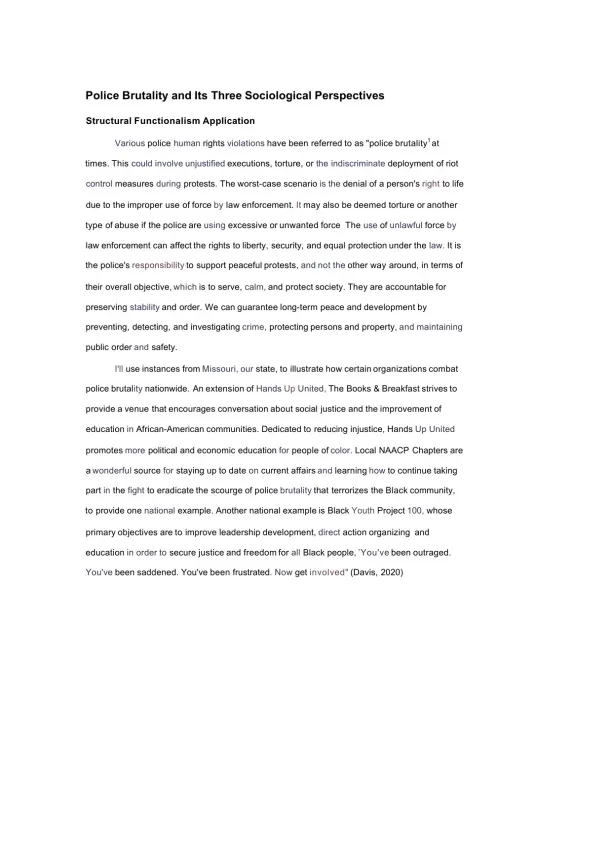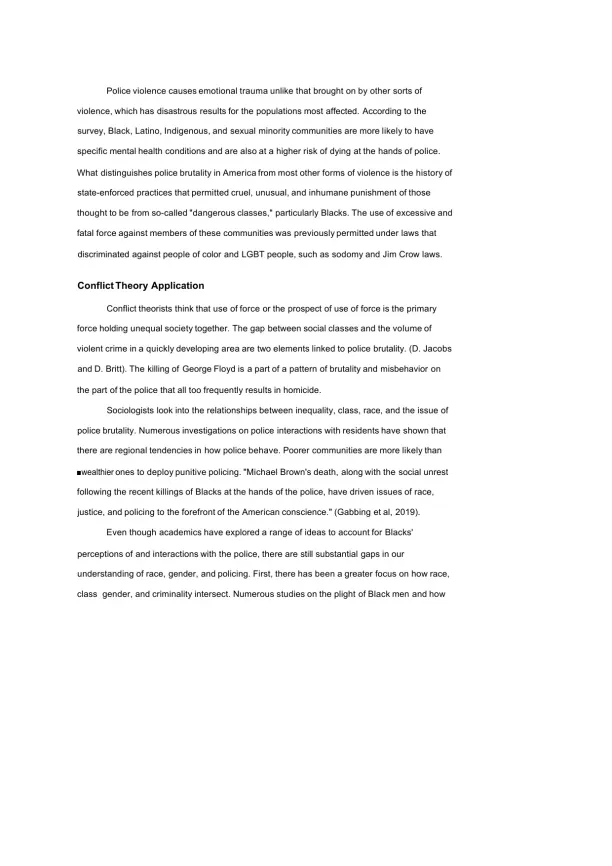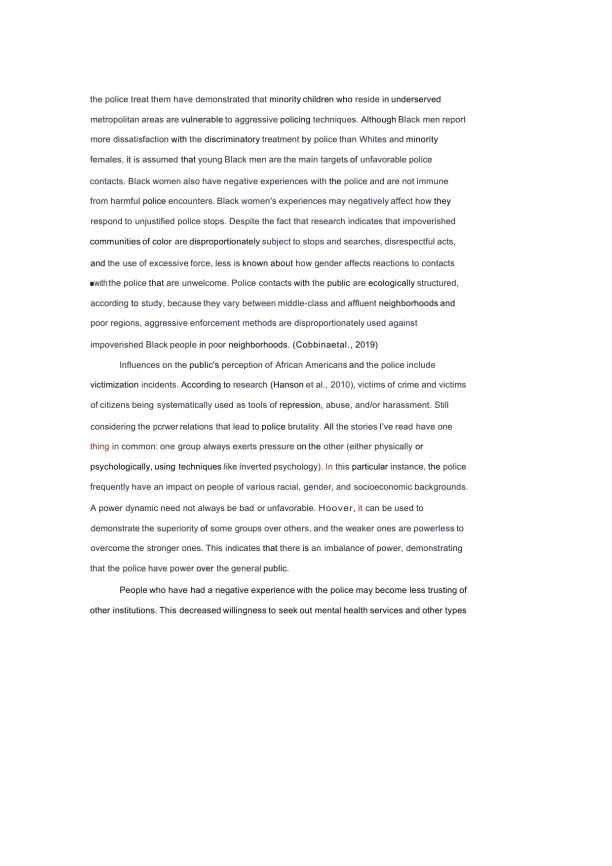Page 1

Loading page image...
Page 2

Loading page image...
Page 3

Loading page image...
Police brutality—excessive or unjust force by law enforcement—violates human rights and undermines public trust. From a structural functionalist view, it disrupts the police's role in maintaining order, safety, and social stability.
Loading page image...
Loading page image...
Loading page image...
This document has 7 pages. Sign in to access the full document!